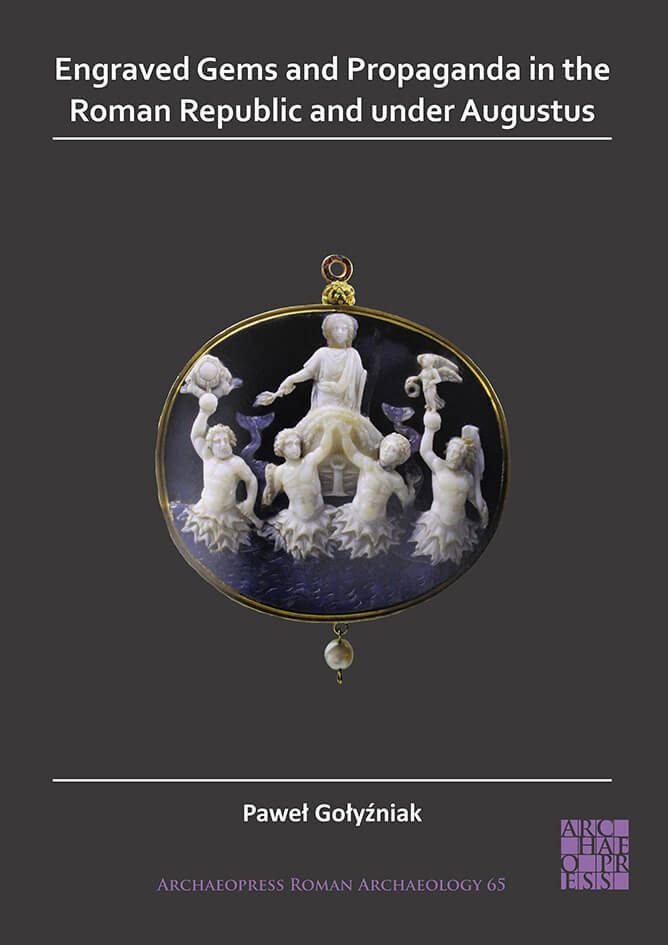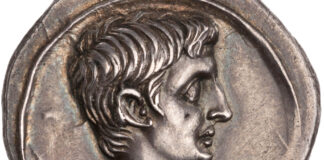
Paweł Gołyźniak and Archaeopress from Oxford have just released a new book on engraved gems with many references to Roman Republican and Augustan coinage in Open Access, free to download.
Engraved Gems and Propaganda in the Roman Republic and under Augustus deals with small, but highly captivating and stimulating artwork – engraved gemstones. Although in antiquity intaglios and cameos had multiple applications (seals, jewellery or amulets), the images engraved upon them are snapshots of people’s beliefs, ideologies, and everyday occupations. They cast light on the self-advertising and propaganda actions performed by Roman political leaders, especially Octavian / Augustus, their factions and other people engaged in the politics and social life of the past.
On 618 pages and with help of 1015 colour illustrations you can find out how gems can show both general trends (the specific showpieces like State Cameos) as well as the individual and private acts of being involved in politics and social affairs, mainly through a subtle display of political allegiances, since they were objects of strictly personal use. They enable us to analyse and learn about Roman propaganda and various social behaviours from a completely different angle than coins, sculpture or literature.
The miniaturism of ancient gems is in inverse proportion to their cultural significance. This book presents an evolutionary model of the use of engraved gems from self-presentation (3rd-2nd century BC) to personal branding and propaganda purposes in the Roman Republic and under Augustus (until 14 AD). The specific characteristics of engraved gems, their strictly private character and the whole array of devices appearing on them are examined in respect to their potential propagandistic value and usefulness in social life.
Placing Glyptics in the Interdisciplinary Discourse
The wide scope of this analysis provides a comprehensive picture covering many aspects of Roman propaganda and a critical survey of the overinterpretations of this term in regard to the glyptic art. The aim is the incorporation of this class of archaeological artefacts into the well-established studies of Roman propaganda, as well as the Roman society in general, brought about by discussion of the interconnections with ancient literary sources as well as other categories of Roman art and craftsmanship, notably coins but also sculpture and relief.
The author of the book makes indeed a good use of more than one hundred Roman Republican and Augustan coins (counting only those illustrated, many more are referred in the text) and proves that there are numerous connections between these two arts not only on the technical and stylistic grounds, but most importantly in the propaganda agenda they both transmit. Coins sometimes compensate for important lost intaglios like in the case of the two seals of Lucius Licinius Sulla and they offer immeasurable help with portraits’ identification as well as dates. However, the particular strength of gems if compared to coins and any other branch of art and craft is that they exhibit the real involvement of the society into politics and prove propaganda campaigns successfulness. This is due to the fact that they were strictly private objects; they carried images that people really identified with. Hence, a portrait of a political leader like Pompey the Great or Julius Caesar upon one’s ring was a clear manifestation of support towards a patron. Moreover, intaglios and cameos were both mass produced objects (especially glass gems) and the luxurious ones (for instance the so-called State Cameos). This makes glyptics particularly effective propaganda channel suitable for agitation and integration and reaching or social strata.
To sum up, Gołyźniak’s new book offers a new insight into the political and social affairs of ancient Rome. Coin enthusiasts will certainly find useful and interesting the interconnections between numismatics and glyptics but at the same time they can expand their interest into the beautiful art of gemstones engraving.
You can either purchase a printed copy of the book, or download the complete PDF for free.
Have a look at the author’s academia.eu profile to find out more about his research activities.



